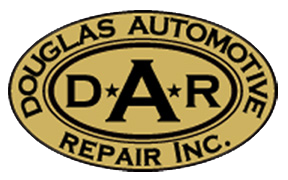A NASCAR Car Chief makes his living communicating. It’s his job to make sure all the changes that Crew Chief wants made are finished, and he must be accurate and exact on instructions to various members of the crew at the track.
“A car chief is the second in command on the team,” says Ron Malec a seasoned Sprint Cup veteran. “We take orders from the crew chief and delegate them out to the various members of the team during the weekend, from car prep to setting up and getting the car through technical inspection. Even at the shop, it is our duty to make sure the car is prepared to race when it leaves for the track.”
So Malec knows a thing or two about how to communicate around a vehicle.
“It starts from the top through delegation to the rest of the guys,” said Malec. “You have to make sure the communication is really clear and precise, because there’s no time for a mistake.”
That thoroughness is something the driver appreciates.
“I’ve had Ron working on my race car since I have driven a stock car,” said Jimmie Johnson. “It’s comforting to know his watchful eyes are over it. I know him so well; I don’t have to worry about anything.”
As an automotive professional, Malec also knows the best way to get your own street vehicle’s problems sorted out so that your technician has a better chance of fixing it the first time. Trusting a technician to diagnose a problem and do a quality repair starts with the motorist’s ability to communicate the issue.
“The best advice I could give is to be very thorough in your description of the problem, cite different occasions when the problem has occurred and write down specifically what happens and when it does, because every little bit of information can make a difference and every little detail can make a difference in what’s wrong with the car,” explained Malec. “You have to know when, how long it’s been running, how long it takes when you’re driving, what speed you’re driving and if there’s a vibration or noise.”
And once you’ve done all you can do on that score, it’s time to let the professional do his own due diligence.
“If you feel comfortable and tried to accumulate all the information you can, that’s all you can really do before you turn it over to the professional for the rest of the diagnostic,” Malec said.
Malec, who built his own 1965 Shelby Daytona Coupe replica from the ground up in his own garage, said that motorists often wait too long to decide there is a problem before getting it looked at, and often make the mistake of trying to take matters into their own hands as well.
“One of the biggest problems people have is they let things go too long,” Malec said. “That creates more problems than if you had just had it taken care of earlier. The other one is trying to fix your car yourself.”
Bottom line: When it comes to repairs, good communication between a motorist and technician is vital. Here are some more tips on how to communicate for better automotive service:
- Do your homework before taking your vehicle in for repairs or service: read the owner’s manual, follow the recommended service schedules and keep a log of all repairs and service.
- Use all of your senses to inspect your car frequently. Check for unusual sounds, odors, drips, leaks, smoke, warning lights, gauge readings or problems in handling or vibrations.
- Note when the problem occurs: is it constant or periodic? When did it start?
- Professionally run repair establishments have always recognized the importance of communications in automotive repairs.
Once you’re at the repair shop, communicate your findings:
- Describe the symptoms and carry a written list of the symptoms that you can give to your technician.
- Resist the temptation to suggest a specific course of repair. Let the technician diagnose and recommend a remedy.
- Stay involved: ask as many questions as you need. Do not be embarrassed to request simple definitions of technical terms.
When you think about it, you know your car better than anyone else. You drive it every day and know how it feels and sounds when everything is right. So don’t ignore its warning signals.
You and your technician may never win a NASCAR Sprint Cup Championship, kiss the bricks in Indianapolis or win a Daytona 500 like Malec and Johnson, but the trust and communication skills you build with your tech can help he or she better take care of your car, which in turn will take care of you.
Give Douglas Automotive Repair Inc a call today. We can help keep your car on the road and running at it’s peak performance!
This entry was posted in Communication and tagged auto repair service, car trouble, Communicating on .
